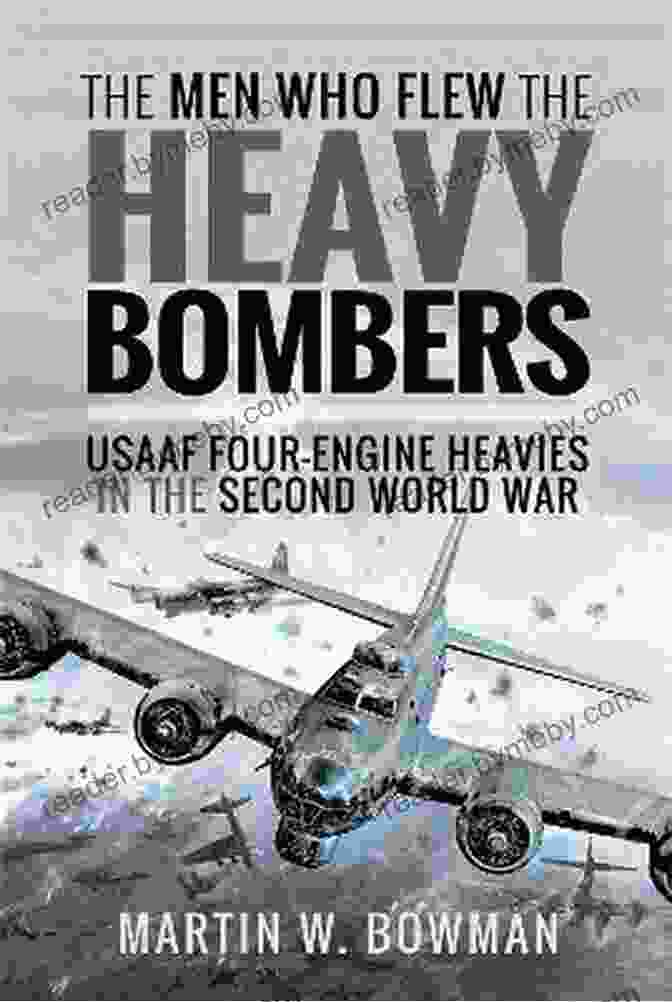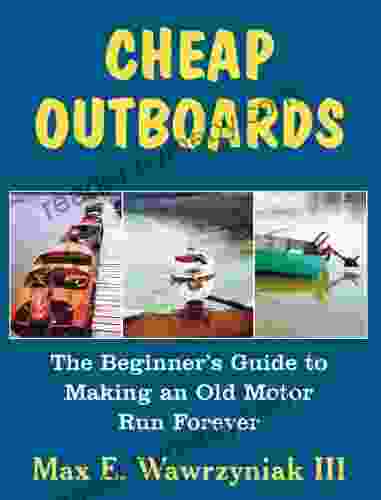Raf And Usaaf Four Engine Heavies In The Second World War: Uncovering the Aviation History of Iconic Aircraft


The Second World War witnessed the emergence of aviation technology on an unprecedented scale. Among the most significant developments were the four-engine heavy bombers, aircraft capable of carrying immense payloads over vast distances. The Royal Air Force (RAF) and the United States Army Air Forces (USAAF) played pivotal roles in the development and deployment of these formidable machines.
4 out of 5
| Language | : | English |
| File size | : | 13823 KB |
| Text-to-Speech | : | Enabled |
| Screen Reader | : | Supported |
| Print length | : | 256 pages |
This comprehensive guide, "Raf And Usaaf Four Engine Heavies In The Second World War," delves into the captivating history of these aircraft. From their genesis to their pivotal contributions in the war effort, the book provides a detailed account of their design, specifications, operational capabilities, and impact on the course of the conflict.
The Birth of the Heavy Bomber
The concept of the four-engine heavy bomber emerged in the interwar years as aviation technology matured. The need for aircraft capable of carrying heavy payloads over long distances became increasingly apparent. By the late 1930s, several nations, including Britain and the United States, had begun developing prototypes.
The RAF's first four-engine heavy bomber was the Short Stirling, which entered service in 1940. The USAAF followed suit with the Boeing B-17 Flying Fortress and the Consolidated B-24 Liberator, both of which debuted in 1941.
Design and Specifications
The four-engine heavy bombers of the Second World War were impressive feats of engineering. They were typically equipped with multiple machine guns for self-defense, as well as bomb bays capable of carrying thousands of pounds of explosives.
The RAF's Stirling was a large, four-engine aircraft with a wingspan of 99 feet and a length of 84 feet. It could carry up to 8,000 pounds of bombs and had a maximum speed of 270 miles per hour.
The USAAF's B-17 was a smaller aircraft with a wingspan of 104 feet and a length of 69 feet. However, it was more heavily armed and could carry a greater payload. The B-17 had a maximum speed of 300 miles per hour and could carry up to 8,000 pounds of bombs.
The B-24 Liberator was similar to the B-17 in size and performance but featured a more streamlined design. It had a wingspan of 110 feet, a length of 67 feet, and a maximum speed of 305 miles per hour. It could carry up to 8,000 pounds of bombs.
Operational Capabilities
The four-engine heavy bombers played a crucial role in the air war over Europe and the Pacific. They were used for a variety of missions, including strategic bombing, anti-shipping operations, and troop transport.
The RAF's Stirlings were heavily involved in the early stages of the war, carrying out bombing raids on Germany and occupied territories. They were also used for minelaying and supply drops.
The USAAF's B-17s and B-24s became the backbone of the American strategic bombing campaign against Germany. They flew daylight precision bombing raids, targeting industrial centers and military installations.
In the Pacific, the B-24s were used for long-range reconnaissance missions and as transports. They also played a key role in the Battle of Midway, where they sank several Japanese carriers.
Impact on the War Effort
The four-engine heavy bombers had a profound impact on the course of the Second World War. Their ability to carry heavy payloads over long distances enabled the RAF and USAAF to strike targets deep within enemy territory.
The strategic bombing campaign against Germany, carried out primarily by the B-17s and B-24s, caused significant damage to German industry and infrastructure. It also demoralized the German population and contributed to the eventual Allied victory.
In the Pacific, the B-24s played a crucial role in cutting off Japanese supply lines and isolating their forces. They also supported amphibious landings and provided close air support for ground troops.
The four-engine heavy bombers of the Second World War were among the most significant aircraft of the conflict. They revolutionized aerial warfare and played a pivotal role in the Allied victory.
The book "Raf And Usaaf Four Engine Heavies In The Second World War" provides a comprehensive and engaging account of these iconic aircraft. It is a must-read for aviation enthusiasts, historians, and anyone interested in the history of the Second World War.
4 out of 5
| Language | : | English |
| File size | : | 13823 KB |
| Text-to-Speech | : | Enabled |
| Screen Reader | : | Supported |
| Print length | : | 256 pages |
Do you want to contribute by writing guest posts on this blog?
Please contact us and send us a resume of previous articles that you have written.
 Book
Book Novel
Novel Page
Page Chapter
Chapter Text
Text Story
Story Genre
Genre Reader
Reader Library
Library Paperback
Paperback E-book
E-book Magazine
Magazine Newspaper
Newspaper Paragraph
Paragraph Sentence
Sentence Bookmark
Bookmark Shelf
Shelf Glossary
Glossary Bibliography
Bibliography Foreword
Foreword Preface
Preface Synopsis
Synopsis Annotation
Annotation Footnote
Footnote Manuscript
Manuscript Scroll
Scroll Codex
Codex Tome
Tome Bestseller
Bestseller Classics
Classics Library card
Library card Narrative
Narrative Biography
Biography Autobiography
Autobiography Memoir
Memoir Reference
Reference Encyclopedia
Encyclopedia Kregg P J Jorgenson
Kregg P J Jorgenson Tony Clunn
Tony Clunn Jeffery Pfeffer
Jeffery Pfeffer Matthew Sturm
Matthew Sturm William Silvester
William Silvester Mary Nethery
Mary Nethery Michael Smith
Michael Smith Scott Davis
Scott Davis Sally Mann
Sally Mann Rick Page
Rick Page Molly Mills
Molly Mills Michelle Dean
Michelle Dean Marcia Angell
Marcia Angell Laurence Minsky
Laurence Minsky Robert Field
Robert Field Malcolm J Nicholl
Malcolm J Nicholl Robert L Wise
Robert L Wise Jonh Craft
Jonh Craft Pat Harvey
Pat Harvey Mark Huber
Mark Huber
Light bulbAdvertise smarter! Our strategic ad space ensures maximum exposure. Reserve your spot today!
 George BellFollow ·13.8k
George BellFollow ·13.8k Efrain PowellFollow ·9.8k
Efrain PowellFollow ·9.8k Jeffery BellFollow ·3.4k
Jeffery BellFollow ·3.4k Tyrone PowellFollow ·15.1k
Tyrone PowellFollow ·15.1k Jerry WardFollow ·8k
Jerry WardFollow ·8k Stuart BlairFollow ·9.7k
Stuart BlairFollow ·9.7k E.M. ForsterFollow ·14.5k
E.M. ForsterFollow ·14.5k Walt WhitmanFollow ·19.1k
Walt WhitmanFollow ·19.1k

 Wayne Carter
Wayne CarterThe Beginner's Guide to Making an Old Motor Run Forever
If you're like most...

 Deacon Bell
Deacon BellNepali Adventure: Kings and Elephant Drivers,...
In the heart of the...

 Carlos Drummond
Carlos DrummondThe Romantic Revolution: A Journey Through History and...
Unveiling the...

 Kazuo Ishiguro
Kazuo IshiguroUnlock Your Inner Innovator: Dive into the New Wave...
Embark on a Transformative Journey of...

 William Golding
William GoldingCrazy Horse: The Lakota Warrior's Life and Legacy
In the annals of Native...

 Hector Blair
Hector BlairMildred and Richard Loving: The Inspiring Story of...
Mildred and Richard Loving were an...
4 out of 5
| Language | : | English |
| File size | : | 13823 KB |
| Text-to-Speech | : | Enabled |
| Screen Reader | : | Supported |
| Print length | : | 256 pages |











